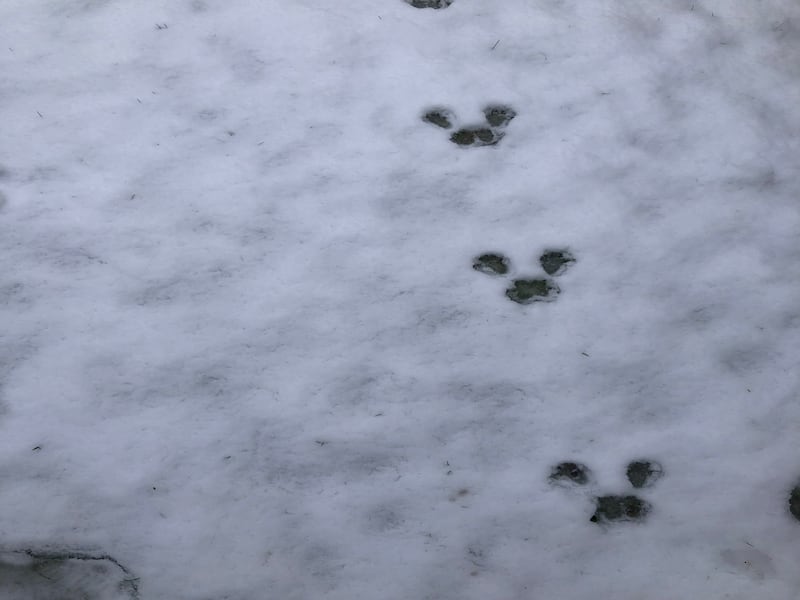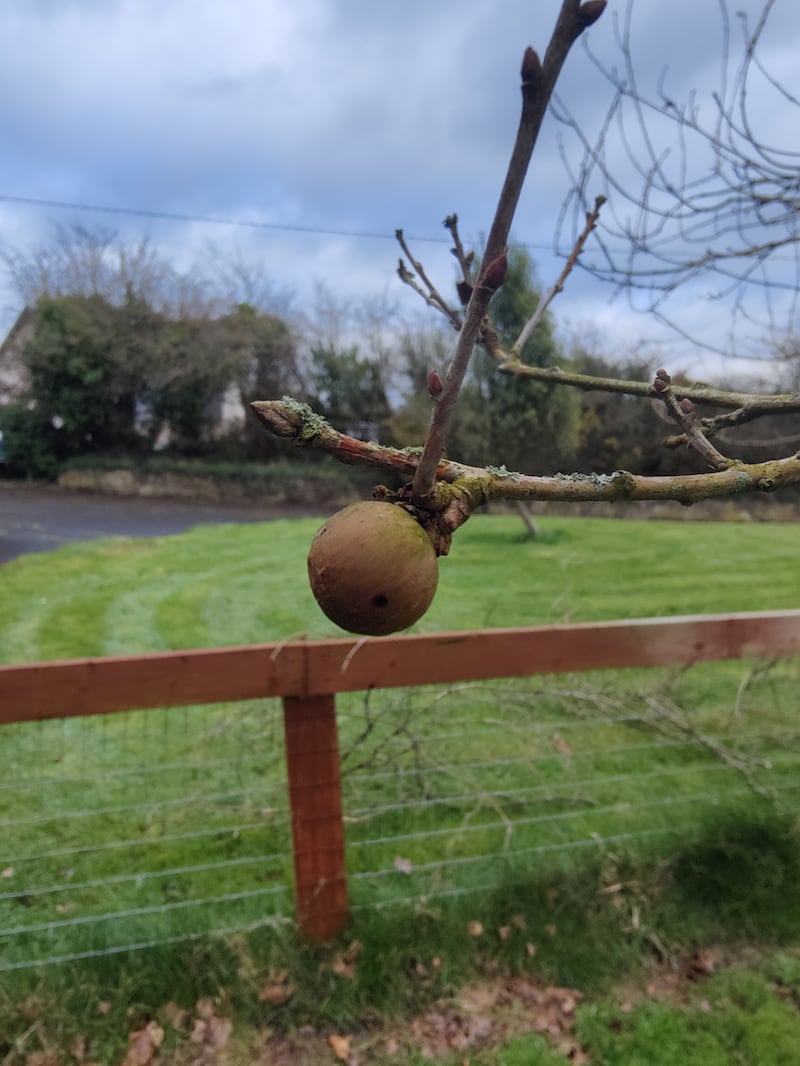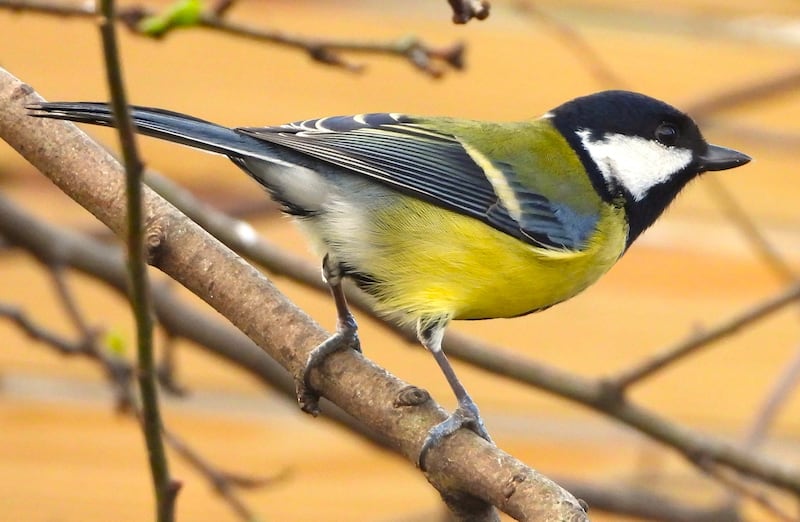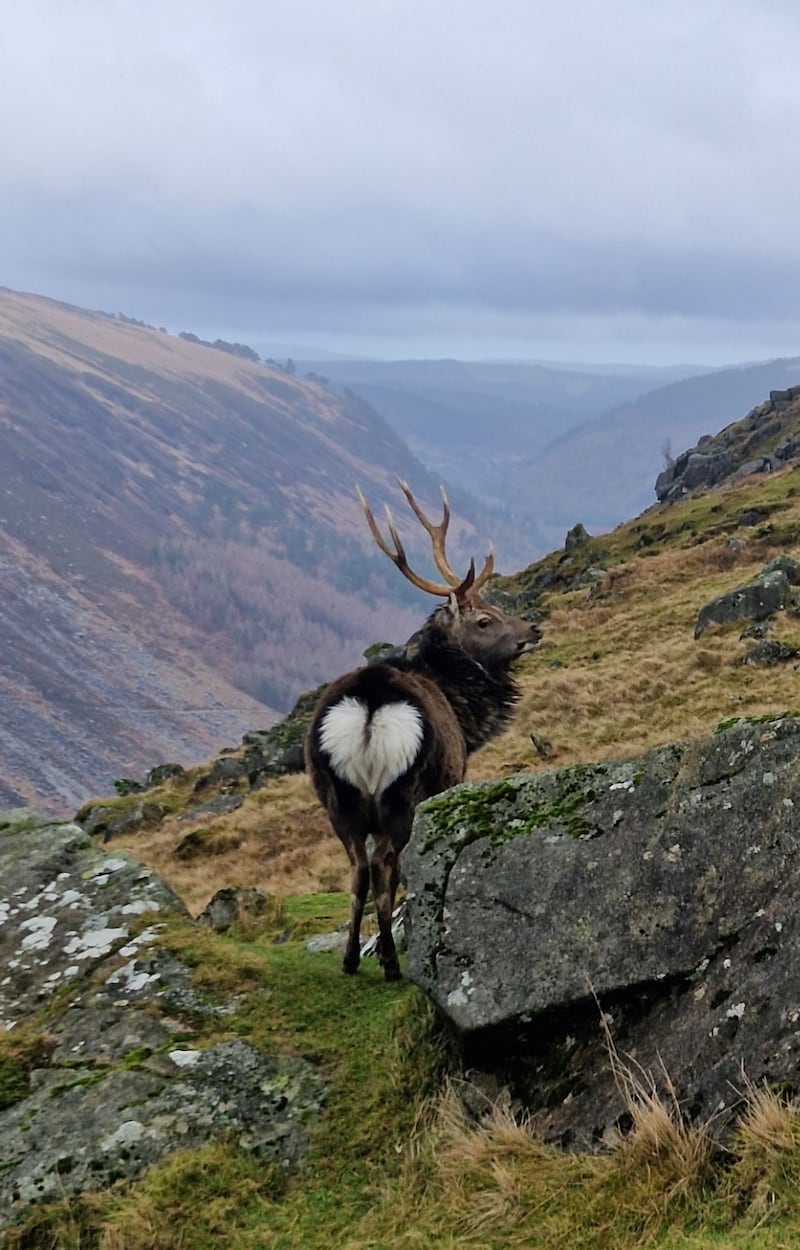I found this snake in the children’s sandpit in Bushy Park with my three-year-old granddaughter. About 15cm long, I caught it between two sticks and left it off away in the bushes. The kids were very interested, but I couldn’t find it online properly.
Jan Van Soest, Greater London, England
For one awful moment I thought that St Patrick had taken his eye off the ball, but then I realised that the Bushy Park mentioned was not in Dublin but in Hampton Court, Surrey. This is a ringed snake/grass snake, one of three species native to Britain. They are usually olive green in colour although darker variations are possible. But the markings are unmistakable: it is the only European snake to have a distinctive mark on the neck. It should be hibernating until the end of March, although there are records for it from the end of January in mild years.

A snowy morning, March 1st. Who’s that hopping round our garden? A hare or a rabbit?
Helen Pinoff, Co Leitrim
The prints of the back feet of hares and rabbits appear at the front of the track because of their bounding gait. Rabbit prints are smaller and the prints of the back feet (which are at the front of the track) are more rounded than those of the hare. This was a rabbit ambling along.

I spotted this gall wasp nest on an oak tree in my garden while trimming. Is there any way of telling the species? I assume it is probably from last year and that the gall wasp has long since left.
Paul McNally, Co Kilkenny
This is an oak marble that was formed by the oak tree in response to the laying of an egg in a bud by a tiny oak marble gall – Andricus kollari. The marble turns brown as it matures and the grub inside, which by autumn has become an adult, escapes through a tiny hole that it bores itself. After mating, the females lay eggs on the underground roots of the non-native Turkey oak. All these eggs mature as asexual wingless females, which next spring will climb up your native oak again, lay on the twig buds and begin the life cycle.

Is this a coal tit or a great tit? It’s hard to tell [the] difference.
Niall MacNeill, Dublin
This is an excellent picture of a great tit. At 14cm it is larger than the coal tit, which at 11cm is our smallest tit species. Coal tits have a large white patch on the back of the head and the nape, which is entirely lacking in the great tit. The latter have a black line down the centre of the yellow breast – it’s narrower in the female. The coal tit also has two faint whiteish wing bars, whereas it is just one definite one in the great tit. The song is different, too – a two-note call “teacher, teacher” from the male great tit, while the coal tit makes a high “fee-chew” sound.
READ MORE

We saw this appropriately marked deer on our hike in Glendalough on Valentine’s Day.
Karen Mitchell, Wicklow
Sika deer were introduced to Ireland by Lord Powerscourt in 1860. He kept the original stag and three hinds with other deer species in his deer collection in Wicklow, and within 15 years hybridisation between a red stag and a sika female had taken place. The fertile hybrids soon interbred with both red deer and Sika. So all are hybrids now except for one pure herd of each, which occur in Killarney.
Please submit your nature query, observation, or photo with a location, via irishtimes.com/eyeonnature









